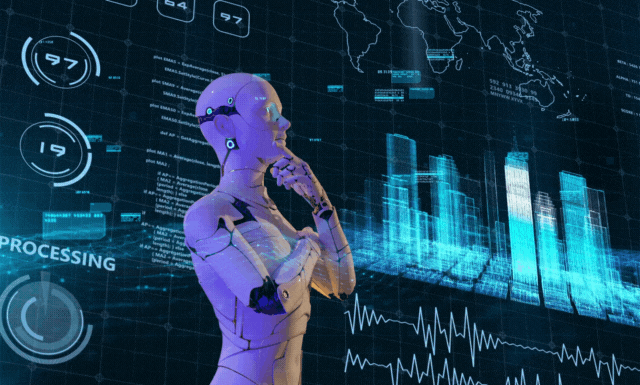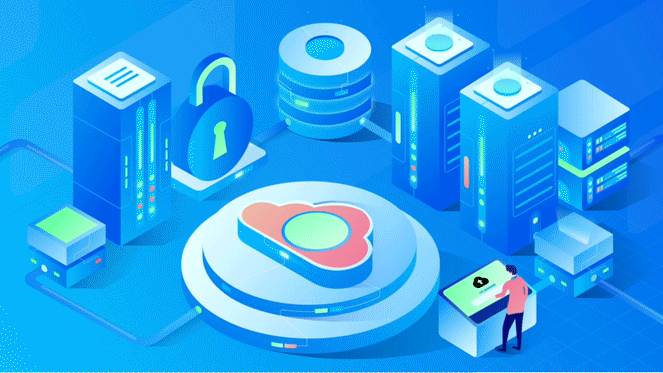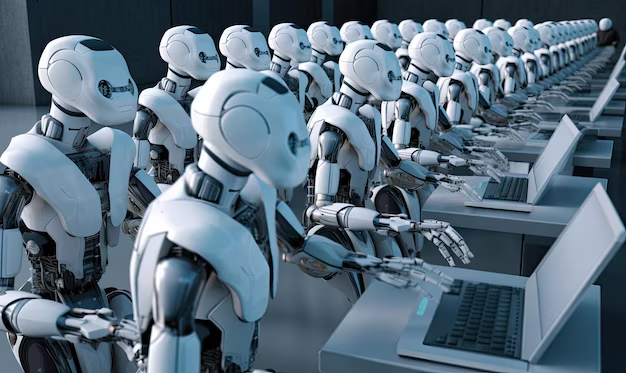Introduction
Artificial Intelligence (AI) is no longer a futuristic concept — it’s an operational reality, rapidly transforming industries, economies, and societies. From self-driving cars and natural language processing to predictive analytics and autonomous robotics, AI is redefining what machines can do. But with great capability comes great complexity. This article explores the foundations of AI, its current applications, and the multifaceted implications—technical, ethical, economic, and geopolitical.
What is Artificial Intelligence?
Artificial Intelligence refers to the capability of machines to simulate human intelligence. Broadly, AI can be classified into three types:
- Narrow AI (Weak AI): Performs a single task (e.g., recommendation systems, spam filters).
- General AI (Strong AI): A theoretical concept where machines possess human-level cognitive abilities.
- Superintelligent AI: Hypothetical AI that surpasses human intelligence across all domains.
Modern AI relies heavily on:
- Machine Learning (ML): Systems that learn patterns from data.
- Deep Learning: A subfield of ML using neural networks for complex tasks like image recognition.
- Natural Language Processing (NLP): Understanding and generating human language.
Key Applications of AI
1. Healthcare
- Disease diagnosis using deep learning (e.g., cancer detection in radiology).
- Drug discovery acceleration.
- Predictive analytics for patient care.
2. Finance
- Fraud detection using anomaly detection.
- Algorithmic trading.
- Credit risk modeling and customer scoring.
3. Transportation
- Autonomous vehicles (Tesla, Waymo).
- Traffic prediction and optimization.
- Supply chain logistics.
4. Cybersecurity
- Real-time threat detection.
- Behavior-based access controls.
- Automated incident response.
5. Retail and Marketing
- Customer segmentation.
- Personalized recommendation engines.
- Inventory demand forecasting.
Ethical and Social Implications
⚖️ Bias and Fairness
AI systems can amplify societal biases if trained on biased data. Examples include racial or gender bias in facial recognition or hiring algorithms.
🔒 Privacy Concerns
AI systems trained on vast user data pose significant privacy risks. Facial recognition in public surveillance and mass data collection threaten civil liberties.
👷 Job Displacement
Automation via AI is expected to displace millions of routine jobs, particularly in manufacturing, transport, and administrative sectors, while creating new roles in AI development and maintenance.
🤖 Autonomy and Control
AI in military applications (e.g., autonomous drones) raises critical questions about lethal autonomous weapons and human oversight.
🧠 Existential Risk
Superintelligent AI poses a theoretical risk if control mechanisms fail. Researchers advocate for AI alignment—ensuring AI goals match human values.
Technical Challenges in AI
- Explainability: Many deep learning models are black boxes. Efforts like LIME, SHAP, and interpretable ML aim to address this.
- Generalization: AI systems often fail outside their training distribution.
- Data Dependency: High-quality, large-scale datasets are crucial for accurate AI.
- Energy Consumption: Training large language models (e.g., GPT, LLaMA) is energy-intensive.
Regulatory and Geopolitical Landscape
- EU AI Act: Introduces a risk-based framework to regulate AI use in the European Union.
- U.S. Executive Orders: Focus on responsible AI innovation and national security.
- China: Strong national investment in AI, with state-guided ethical frameworks.
- Global Race: AI supremacy is a strategic priority among leading nations, driving massive public and private investments.
The Road Ahead
🌐 Democratization of AI
Open-source models (e.g., OpenAI, Meta’s LLaMA, Mistral) are making AI development accessible globally.
🧬 Integration with Other Fields
AI will converge with quantum computing, biotech, and edge computing, opening new frontiers.
🛡️ Need for Governance
AI governance must balance innovation and safety, involving technologists, policymakers, ethicists, and civil society.
Conclusion
AI is not just a technological shift—it’s a civilizational one. While it offers transformative opportunities across every domain, it also introduces profound challenges. The future of AI depends not just on code, algorithms, or compute power, but on how wisely and ethically humanity chooses to wield it.






 then choose "Install".
then choose "Install".